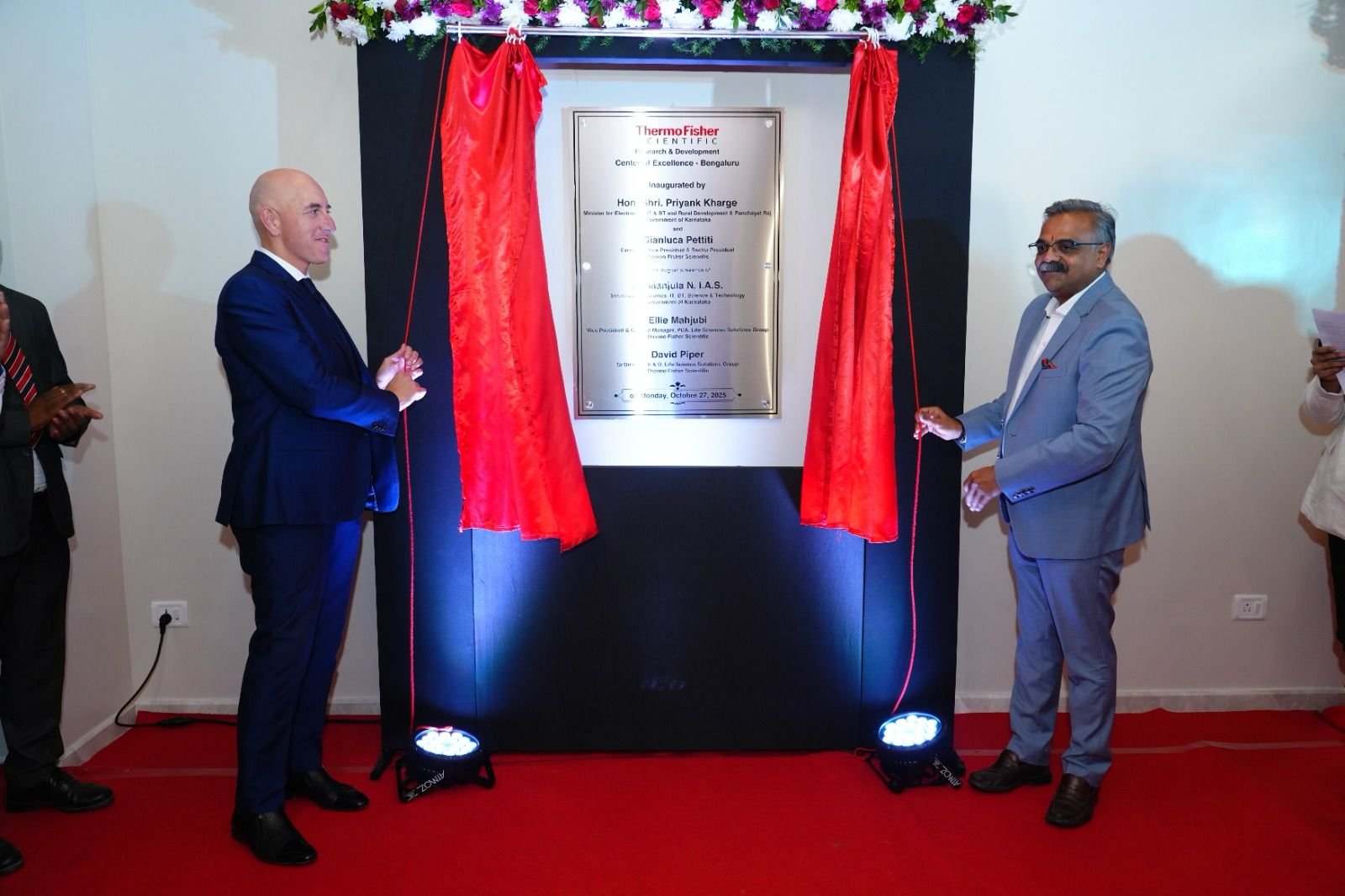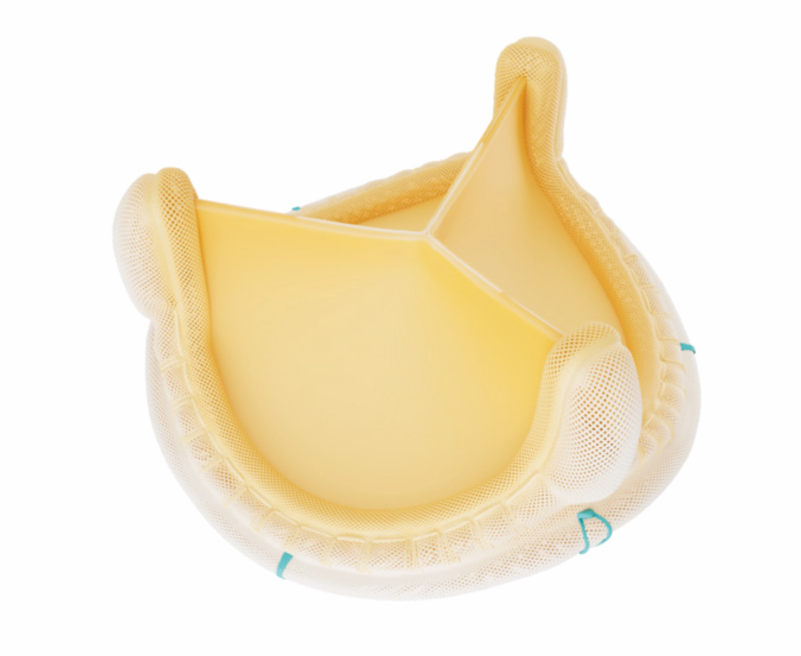BioPharma leverages on IT
March 11, 2004 | Thursday | News
The pharmaceutical advances for considerable improvement in
life expectancy and health all over the world are the result of a steadily
increasing investment in research. R&D in India is critical to find answers
for some of the diseases peculiar to a tropical country like India and also for
finding solutions for the unmet medical needs. Hence the focus seems to be
shifting to personalized medicine—the right drug for the right patient that
will most likely mandate significant changes to the companies' business
practices. This can be achieved only with the support of the IT companies.
The latest Nasscom report says lot of opportunities exists
for IT firms in ePharma that refers to the use of internet by firms or personnel
in the medical and pharmaceutical industry. The main activities include
eClinical trials and electronic data capturing (EDC), eDetailing, ePrescribing,
eLearning and eCRM. According to analysts the number of ePharma consumers was 11
million in 2001. This is expected to reach 20.4 million by 2006. eDetailing
expenditure by pharmaceutical companies globally reached about $200 million in
2003.
Commenting on the factors that drive IT spending in the
pharmaceutical industry, Girish Murthi, Infosys Technologies said, "The
most important factor that affects shareholder value is the strength of the
pharmaceutical company's drug pipeline. Most drugs fail clinical trials, which
are expensive and time-consuming. Only a select few, such as Claritin, Prozac
and Viagra, become blockbuster drugs. Thus, it is critical for drug companies to
manage their product development portfolios effectively and to mobilize R&D
and sales and marketing resources around products most likely to be successful
in clinical trials and in the market."
Bioinformatics applications

We understand each stage of bringing a drug to market. Each stage
has unique needs. |
|
Arjun Erry, director
sales, SAS |
According to Avendus Advisors, an Indian investment bank,
genomics is the largest application area for bioinformatics accounting for 50
percent of sales. Other application areas include proteomics (25 percent),
cheminformics (15 percent), and pharmacogenomics (10 percent). The worldwide
bioinformatics market was approximately worth $697 million in 2001 and it is
expected to grow at a CAGR of about 20 percent during the period 2001-06.
In 2001, Frost and Sullivan estimated the Indian
bioinformatics market at $25 million. IT companies such as Tata Consultancy
Services, Cognizant Technologies, Infosys, Wipro and Satyam have bioinformatics
divisions and companies like Dr Reddy's Laboratories, Ranbaxy, Nicholas
Piramal have entered into joint ventures in this field. Companies such as Strand
Genomics focused exclusively on bioinformatics are also entering the arena. The
bioinformatics companies too have opportunities such as data handling, data
mining, genotyping and fingerprinting and DNA sequencing in pharmaceutical
industry.
Products/Tools
Companies like SAS India, VLife Sciences, Tata Honeywell,
Mascon, Nihilent Technologies, Mahindra Consulting, Fundastik Solutions and
TechnoConcept India already have products /tools to support the pharmaceutical
companies both at the administrative and R&D activities.
Arjun Erry, director sales, SAS in India said, "We
understand each stage of bringing a drug to market. Each stage has unique needs.
SAS Solutions for pharma and biomedical organizations distinctly address the
needs of each of these unique stages. Powered by SAS technology, SAS
Pharmaceutical Solutions are designed to work collaboratively, enabling
companies to combine solutions as needed in order to bring drugs to market more
quickly and successfully. SAS solutions optimize the flow of valuable scientific
and operational data within these companies—helping them bring therapies to
market faster and more profitably."
Mascon has developed an advanced sequence analysis tool
called 'Exome tm' to provide a large number of the fundamental tools
commonly needed for computational analysis of biological sequences, as one
integrated suite. AP Agnihotri, senior partner (Management Consultancy
services), Mascon said, "OncomasterTM is another integrated cancer gene
database developed for keeping the pharma industry and oncology researchers in
mind."
IT
spending forecast
-
Total IT spending (hardware,
software, external services, network equipment and internal services)
by the US pharmaceutical industry will grow at a CAGR of 12.8 percent
from $3.015 billion in 2000 to $5.505 billion in 2005).
Source: Gartner Dataquest |
Mahindra Consulting Ltd (MCL) has developed an expertise in
implementing SAP in vertical sectors of automobiles, oil and gas and
pharmaceuticals. In the last seven years of its existence, MCL has completed 35
implementations of SAP in the global and Indian Fortune 500 companies including
Glenmark Pharma among many others. It offers implementation services for a suite
of services like ERP, SCM, PLM/PDM and BI to meet their functional activities.
"We already have over 12 installations six each at the
academia and industry. We are discussing with the top 20-pharma companies and
also looking at global companies. The feedback is very satisfactory. Our
products are focused on cheminformics and research-oriented companies. We are
confident that the pharma companies will benefit from our technologies—ChemGen
and MDS," said Atul Aslekar, director, VLife Sciences.
"With POMS solutions, Honeywell is providing validated
clinical and manufacturing solutions to healthcare manufacturers. Over 15,000
people in 15 countries are using POMS solutions. We have a strong worldwide
presence that includes the top pharmaceutical companies in the global fortune
500. Our innovative software technology, complemented by our manufacturing
expertise and reduced implementation time, has earned this leadership
role,"said Asheesh Arora, deputy general manager, Chemicals, Life Sciences
& Consumer Goods, Tata Honeywell Ltd.
Nihilent Technologies has recently brought to India its
patented MC3 framework for learning and innovation, with a specific focus on the
pharmaceutical industry amongst others. Ravi Teja, practice head for MC3 said,
Jonu Rana, country manager, India operations, Nihilent Technologies said,
"We are in fairly advanced stages of discussions with a number of
pharmaceutical companies. Under their leadership and vision we hope to build
truly 'blockbuster' organizations in near future."
Nishant Gupta of Fundastik Solutions said, "Fundastik
has designed an algorithm to predict the biochemical pathway, in which the
truncated proteins (hypothetical proteins ¡V) play an active role. And we have
been successful in identifying about 10 cases of protein introns (inteins),
which is primarily a fascinating aspect to design proteins that undergo
self-cleavage and protein ligation reactions. We are also working on Human Stem
Cell database, which is nearing completion."
TechnoConcept India Pvt. Ltd has two tools namely DNASTAR,
Lasergene software for DNA sequence analysis and HYPERCUBE, known for its
molecular modeling software called HyperChem. It has 35-40 installations for
DNASTAR and about 50 installations for HYPERCUBE.
Affordable
Any cost will depend on the solution that the customer will
want to implement. Having said this, it is critical to map the cost back into a
RoI (return on investment) chart that does not equate return in monetary but
business benefit terms. AP Agnihotri of Mascon said, "Prices of various
software tools depend on the configuration and customization needs of the
users." The prices offered by Mascon for its product includes Exome tm: Rs.
45,000-70,000, Exome-ED tm: Rs. 15,000-18,000 and OncomasterTM: Rs.
50,000-100,000.
Rakesh Arora, TechnoConcept said, "as an authorized
Indian reseller, we sell DNASTAR at a price of approximately Rs 3 lakh (stand
alone single user version) with value addition of training program and technical
support, all bundles in comprehensive offer to the customer." HyperChem is
priced at Rs. 60,000-100,000 per single user depending on various options of
training etc. bundled with the software (price indications given here are for
academic sector only and the commercial organizations are required to pay higher
license fee).
Elaborating on the benefits of these tools Dr SD Ravetkar,
Serum Institute of India said, "according to the new American standards ie
CFR 11, every project should match GMP standards, validation is a must. So there
is lot of opportunities for IT space in pharma companies. If properly utilized
it will reduce the cost and speed up the research activities/process. The
bioinformatics companies are good in the back up services and as Indian IT
companies are known for their software skills, I feel we should encourage the
Indian bioinformatics companies too."
IT expenditure
The industry sources said about 30-40 percent of the Indian
pharma companies are capable of making investment in IT infrastructure for
R&D work. But for administrative/functional purpose most of the companies
(over 75 percent) have already made the investments.
Dr Ajit Dangi, director general, Organization of
Pharmaceutical Producers of India said "We have 70 companies both MNCs and
leading domestic companies such as Ranbaxy, Dr Reddy's Laboratory, Nicholas
Piramal India Ltd. Astra Zeneca, Aventis Pasteur India Ltd, Wockhardt, Pfizer,
Roche Scientific Company (India), Eli Lilly and Company (India) Pvt. Ltd. Wyeth
Lederle Ltd, Quintiles Spectral (India) Ltd etc. All our members are IT savvy.
They have been using the IT tools and packages for research as well as for
administrative purposes."
 |
|
Arun Gupta, senior
director, business technology, Pfizer |
According to the TCS Pharma CIO report, the cumulative IT
spending by 12 leading pharma companies—Alembic, Aventis, Dr. Reddy's Lab,
GlaxoSmithKline Pharma, Lupin, Novartis Sandoz, Pfizer, Nicholas Piramal,
Ranbaxy, Torrent Pharma, Wockhardt, Zydus Cadila—was about Rs114 crore in the
year 2002-03. It was observed that the individual IT spending for 2002-03 among
these companies varied from Rs 0.9 crore to Rs 35 crore approximately. Of these
companies, the combined employee strength approximated 38,000, with medical
representatives accounting for close to 36 percent. The strength of the IT
department was close to 0.4 percent of the combined employee strength. The
report further adds that the cumulative IT spends are expected (based on the
estimates) to increase approximately to Rs 121 crore in 2003-04. This six
percent growth for the year 2003-04, keeping in line with the rate of inflation,
represents little or no real growth in the cumulative IT spends of the above
companies. It also noted that spending on software licenses did not seem to be a
major expense category and most companies indicated relatively stable spending
with periodic spurts caused by investments in new application areas. IT services
seemed to be a major area for spending, with activities such as connectivity,
needs assessment, outsourcing and maintenance contributing to the bulk of
expenditure.
IT for day-to-day operations
Pfizer Ltd has initiated IT moves in the last one and half
years ago. Now it is in the process of deploying sales field portal that will
give significant boost to the working culture in sales to reduce expenses.
"There are upcoming technologies that we are looking to deploy provided it
adds value to the business like infrastructure management and development,
wireless networking unified storage if need permits," said Arun Gupta,
senior director, business technology, Pfizer. He added, "Our investments in
the local R&D activities are budgeted and funded by the global organization
and not Pfizer India."
"In pharma sector budgets are owned by business and not
by IT. We generally budget for what we spend and operational sustenance of
infrastructure. We spent around Rs 5 crore last year on various IT initiatives
and this year we are likely to spend more," Arun Gupta elaborated.
Fortis Healthcare, Ranbaxy promoted chain of speciality
hospitals with hubs in Noida and Mohali is increasing its IT budget to Rs 3.5
crore so as to implement the various programs including the hospital information
system (HIS) and single point clearance system in the Noida facility. It also
plans to have biometrics thumb reading systems for time attendance as well as
access, which would eventually replace its smart card systems in all facilities.
According to Sunil Kapoor, CIO, Fortis Healthcare, the organization has
benefited from HIS implementation and hospitals have attained near paperless and
filmless status with paper being used merely to confirm the government
regulations. The organization used to spend about Rs 2 crore but the IT
implementation has reduced its inventory to less than Rs one crore.
"GlaxoSmithkline Beecham too has made investments to the
tune of Rs 5 crore on IT implementation. With this we managed to enhance
production efficiency from 10 to 40 percent by reducing the costs involved in
infrastructure. Our IT projects are aimed at providing a fillip to integration
process i.e. connecting the field force with the managers through its HRMS
solution via internet," said S Suresh, GM IT, GSK India.
Dr SD Ravetkar, senior director of Pune based Serums
Institute of India, a world leading DTP vaccine manufacturer said, "We have
IT infrastructure both at administrative purpose and R&D activities. "
IT for long-term benefits
|

"Our IT projects are aimed at providing a fillip
to integration process i.e. connecting the field force with the managers
through its HRMS solution via internet," |
|
S Suresh, GM IT, GSK
India. |
SRL Ranbaxy, the largest clinical testing laboratory in India
currently has a very small R&D setup and its primary objective is to
translate the basic research findings for clinical applications and evaluation
of implications of technological advances in clinical diagnosis etc. "Since
our R&D department is in the initial stage, IT usage was not in line with
the other operation areas of SRL because the priority was to setup a domain in
R&D and then look for additional resources. More over the investments had to
justify the long-term benefits. Now we have started having very small amounts of
budget allocation from the IT budget to R&D in the last year. Also our
in-house team developed Biorepository data management tool (ETL) to support
R&D 's initiative," said G Radhakrishna Pillai, head IT, SRL Ranbaxy.
Commenting on the future plans, he said, "In the coming
financial year we will be having 10 percent IT budget towards R&D clinical
trial IT requirement, which will be used basically for data management tool,
statistical analysis tools and other hardwares."
Briefing about the IT spending on R&D front, Dr SD
Ravetkar said, "We started using the bioinformatics tools in our R&D
six years ago to speed up the process, to analyze the statistical data,
presentation of the results, interpretations of proteomics and genomics. We
imported the bioinformatics tools from Nova, a European company and a couple of
US based companies. However now Bangalore based companies are talking with us.
We are investing about 5 percent of our total revenue on IT infrastructure
(includes maintenance and purchasing new tools and hardware).
However Girish Murthi said, "Although the pharmaceutical
industry has been aggressive in its investment in R&D solutions, it has been
relatively conservative in its enterprise application and manufacturing
investments, such as ERP and SCM. Some of this conservatism can be attributed to
the industry's success. The efficiency reaped by enterprise applications has
been perceived to be relatively unimportant in affecting the industry's
double-digit growth."
Partnering between business and IT
"IT investment so far towards the R&D has not been
very substantial. But I am sure that in the years to come, IT will have a major
role in supporting R&D initiatives and there by have a reasonably focused
budget allocation for IT. We are also evaluating the option for outsourcing some
of the R&D's IT requirement to bioinformatics companies to avoid huge
amount of capital investment and other associated expenditures. We are in the
process of identifying a partner and working together as collaborators on
mutually beneficial revenue model. I think in today's competitive scenario
this model will be successful option for companies like us. I am sure this model
may not work for the typical pharma companies with large scale R&D set
up," said Radhakrishna Pillai.
"Since R&D is the focus of many pharmaceutical
companies with WTO agreement will come into effect from Jan. 1, 2005
bioinformatics companies have a greater role to play. Without these tools the
R&D activities in pharmaceutical sector will be crippled," said Dr
Ravetkar.
The pharmaceutical and biotechnology industries in India are going through a
significant transition. With the product patent regime round the corner the
rules of engagement are changing. Most significant players are looking to cope
and meet the challenges that 2005 will bring, while the MNC players are looking
to take complete advantage of the situation. Whether it's through basic
research, restructuring, consolidation, product portfolios, 80/20 targeting or
expanding sales reach, it very clearly is going to be the 'Survival of the
Innovative'!
Narayan Kulkarni & Faiz Askari











